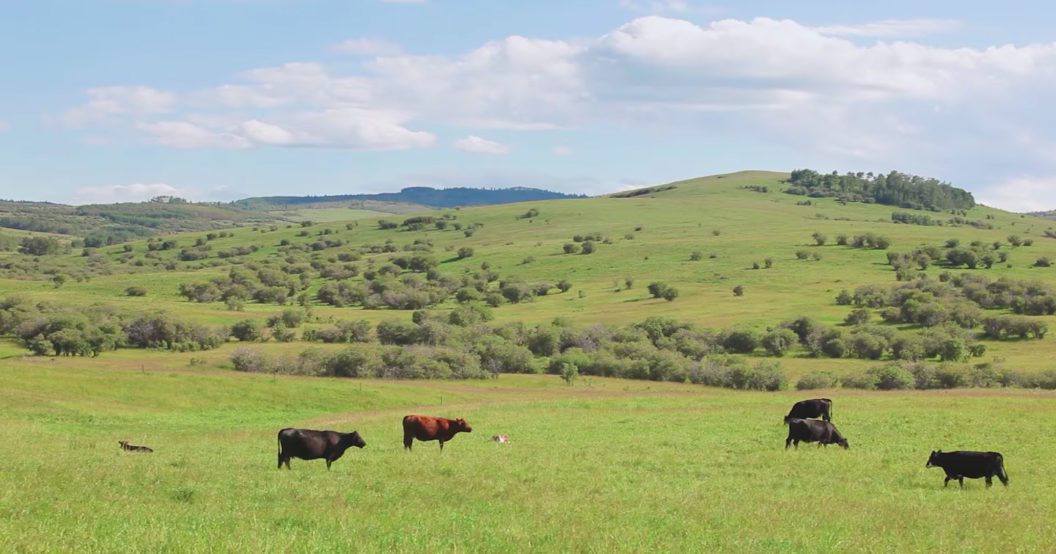
Calgary, AB – As the global policy conversations come to a close at COP15, the important connection between raising cattle in Canada and collaboration between industry, government and conservation partners, were underscored as critical elements to protecting nature and enhancing biodiversity. Together with our conservation partners, the Canadian Cattle Association (CCA) and the Canadian Roundtable for Sustainable Beef (CRSB) was pleased to have the opportunity to participate in the event as an official observer and as a part of the Canadian delegation, and to share the Canadian cattle industry’s sustainability and biodiversity story.
Much of the focus of COP15 was placed on the adoption of the ‘Kunming-Montreal Global Biodiversity Framework (GBF)’. This is a landmark decision that will shape the future of biodiversity conservation. The framework recognizes that urgent policy action is required globally, nationally, and regionally, to achieve sustainable development and that we must all take immediate action to halt and reverse biodiversity loss.
In Canada, we know beef cattle production is an effective way to conserve grasslands, sequester carbon, and enhance biodiversity. The avoided conversion and restoration of grassland and riparian ecosystems represent the largest emissions mitigation opportunity in Canada, aligning with the ambitious ‘30 x 30’ targets of the GBF and identified as a key natural climate solution. Beef cattle farmers and ranchers realize they have a critical role to play in solving the twin crises of biodiversity and climate change. Our producers manage and protect these large areas of at-risk ecosystems and our targets to maintain and conserve these ecosystems through continuous improvement, contribute to the outcomes of the GBF.
The intersection of working landscapes and biodiversity had heightened prominence in the discussions at COP15 in comparison to other international events. Farmers and ranchers are proud of the role that cattle grazing plays in supporting the majority of wildlife habitat across Canada while contributing sustainably to global food security with a highly nutritious protein.
Quotes:
“CCA is confident that through collaboration with industry and conservation partners, and the support of the Government of Canada, we are well-positioned to achieve our ambitious 2030 goals and contribute positively as a nature-based solution provider. We look forward to working in partnership to conserve and maintain the important ecosystems through beef cattle production.”
-Duane Thompson, Environment Committee Chair, Canadian Cattle Association
“The Canadian Roundtable for Sustainable Beef (CRSB) advances, measures and communicates continuous improvement in sustainability of the Canadian beef value chain. Our Certification Framework has an indicator centered around biodiversity, developed through a multi-stakeholder approach, to maintain or enhance wildlife habitat managed by cattle producers. We also know that lands used for beef cattle production represents 68 per cent of the wildlife habitat capacity on the agricultural landscape in Canada. We look forward to collaborating with members and partners to advance our common conservation goals.”
-Ryan Beierbach, Chair, Canadian Roundtable for Sustainable Beef
“Grasslands that are managed responsibly for grazing cattle can also support significant populations of grasslands birds. This group of birds is declining faster than any other bird group in Canada, which is primarily due to habitat loss. As the achievements of COP15 are celebrated and the measures to recover nature are beginning to be implemented, Birds Canada urges lawmakers to recognize and support the vital role that grasslands play in addressing the twin global crises of biodiversity loss and climate change.”
-Ian Cook, P.Ag, Grassland Conservation Manager, Birds Canada
“Canadian Wildlife Federation is pleased to be partnering with the Canadian Cattle Association and cattle producers to deliver good outcomes for biodiversity. Across all agricultural production in Canada, grazing systems support the highest level of biodiversity”.
-Carolyn Callaghan, Senior Conservation Biologist for Terrestrial Wildlife, Canadian Wildlife Federation
“Partnerships are critical to protecting nature and enhancing biodiversity across the country. We’ve known for a long time that the same people who grow and raise our food also steward much of Canada’s most important habitat. Through collective collaboration with our industry partners, Ducks Unlimited Canada hopes to advance and enhance pragmatic solutions that meet the growing demand for environmental outcomes while producing abundant and healthy food.”
-Paul Thoroughgood, National Manager of Sustainable Agriculture, Ducks Unlimited Canada
“Conservation of natural and biodiverse landscapes requires a whole-of-society approach. The Nature Conservancy of Canada is proud to partner with many groups sharing our values of conserving and stewarding threatened ecosystems. Sustainable ranching, for example, and the conservation of nature go hand in hand. Because of our partners in the cattle industry, including hundreds of private landowners, tens of thousands of hectares of grasslands across Canada have been conserved from conversion, so both nature and cattle can thrive.”
-Tom Lynch-Staunton, Regional Vice President, The Nature Conservancy of Canada
Pour plusieurs d'information, contactez :
Michelle McMullen
Communications Manager
Canadian Cattle Association
403-451-0931| mcmullenm@cattle.ca
